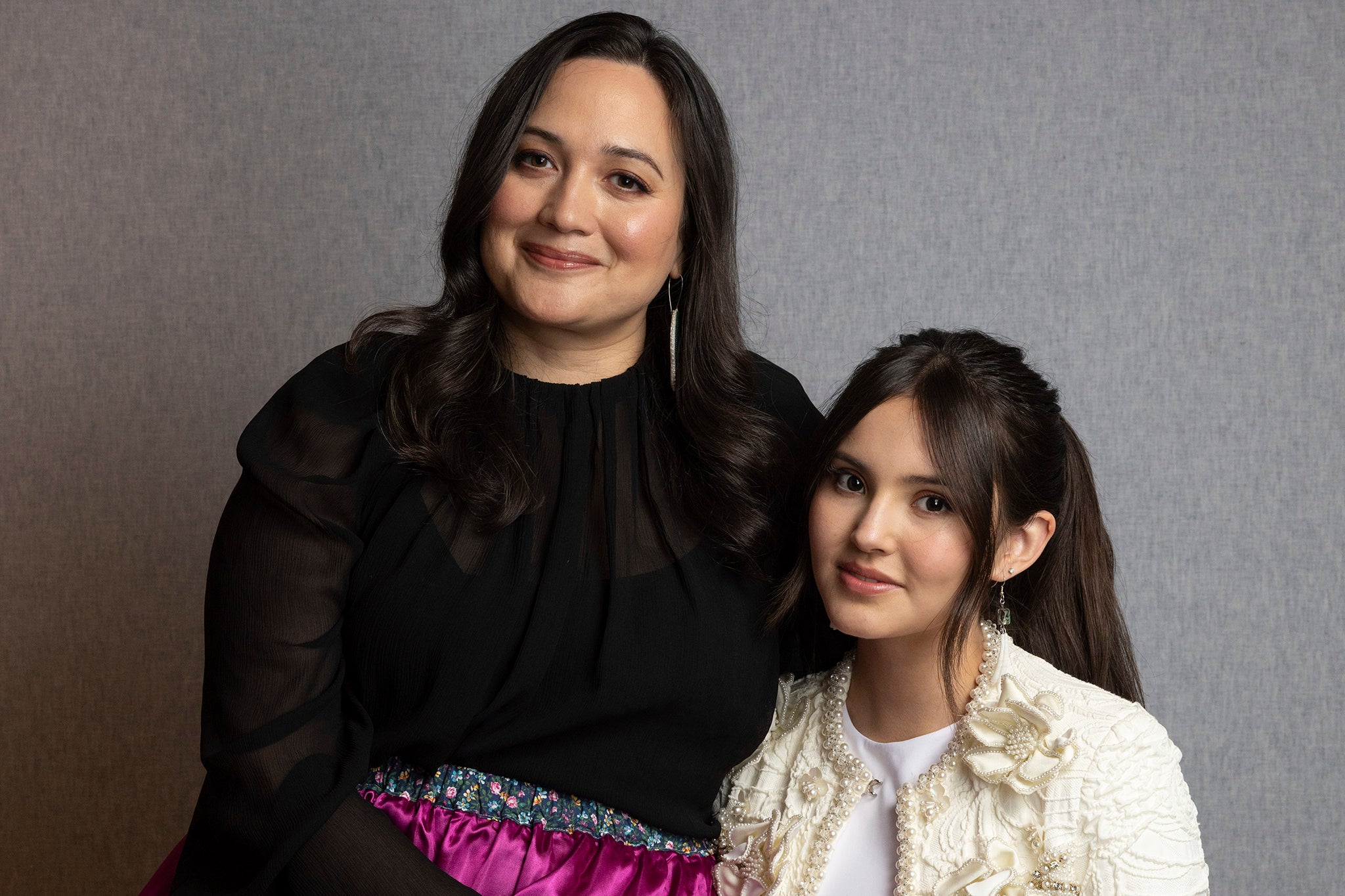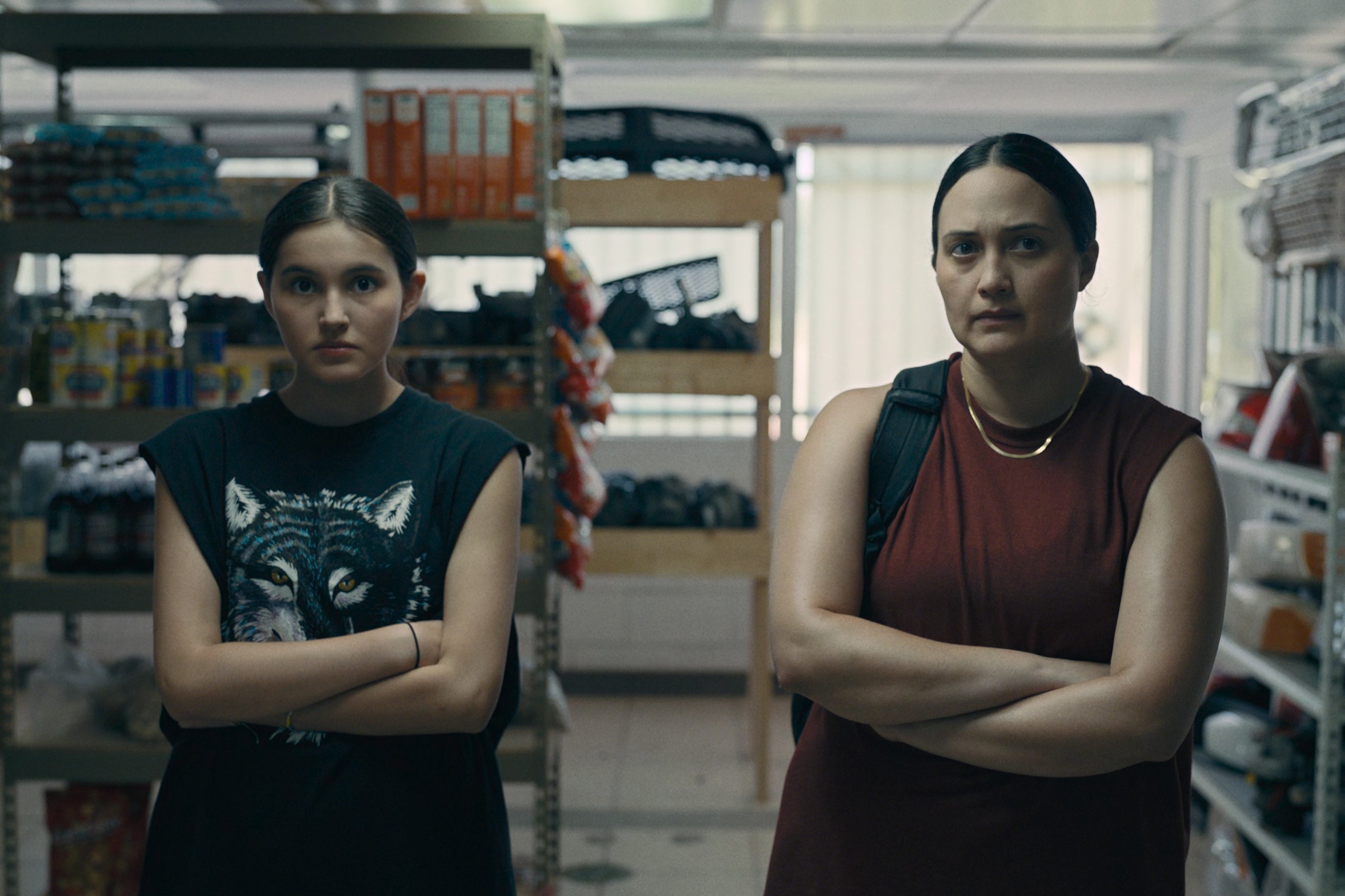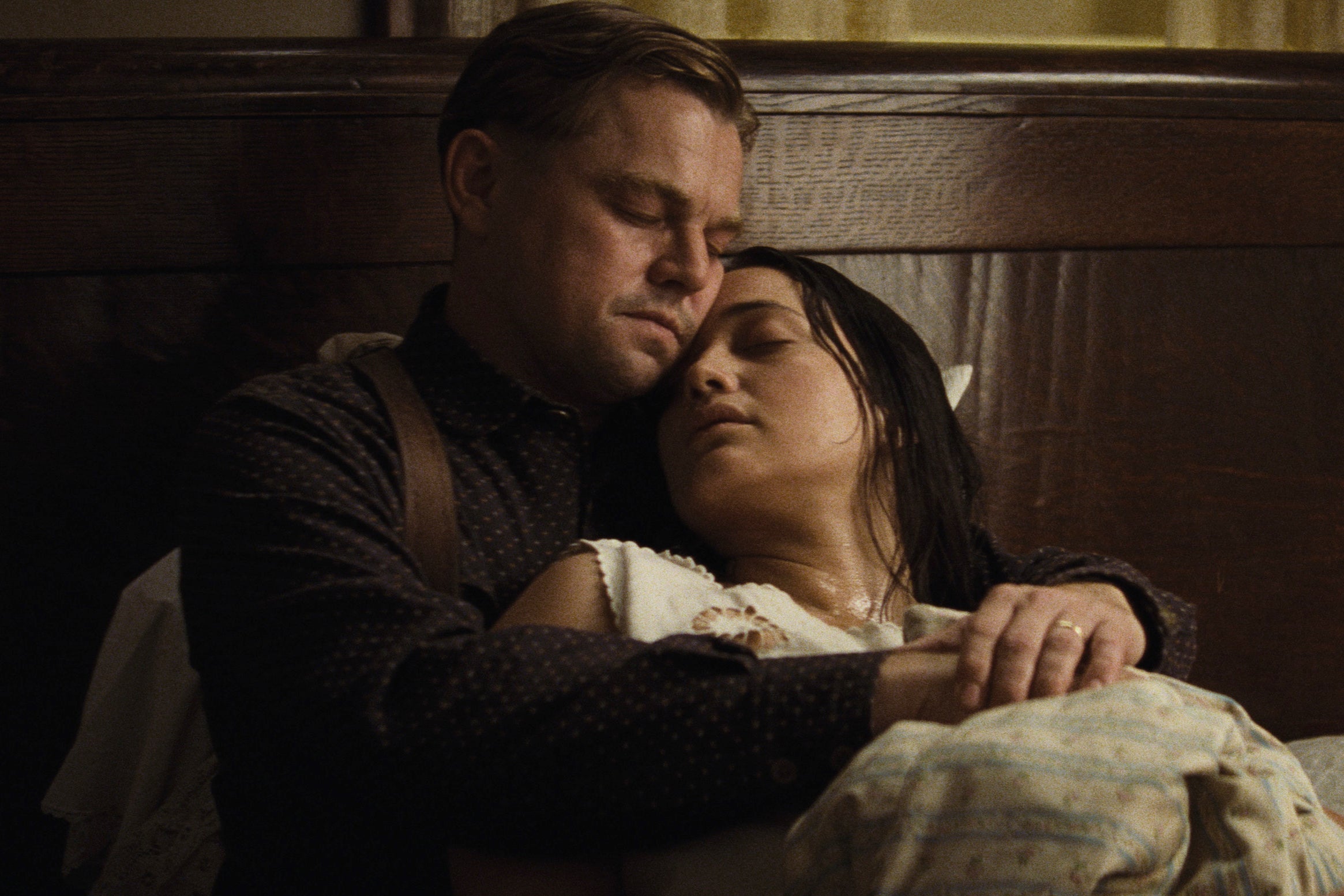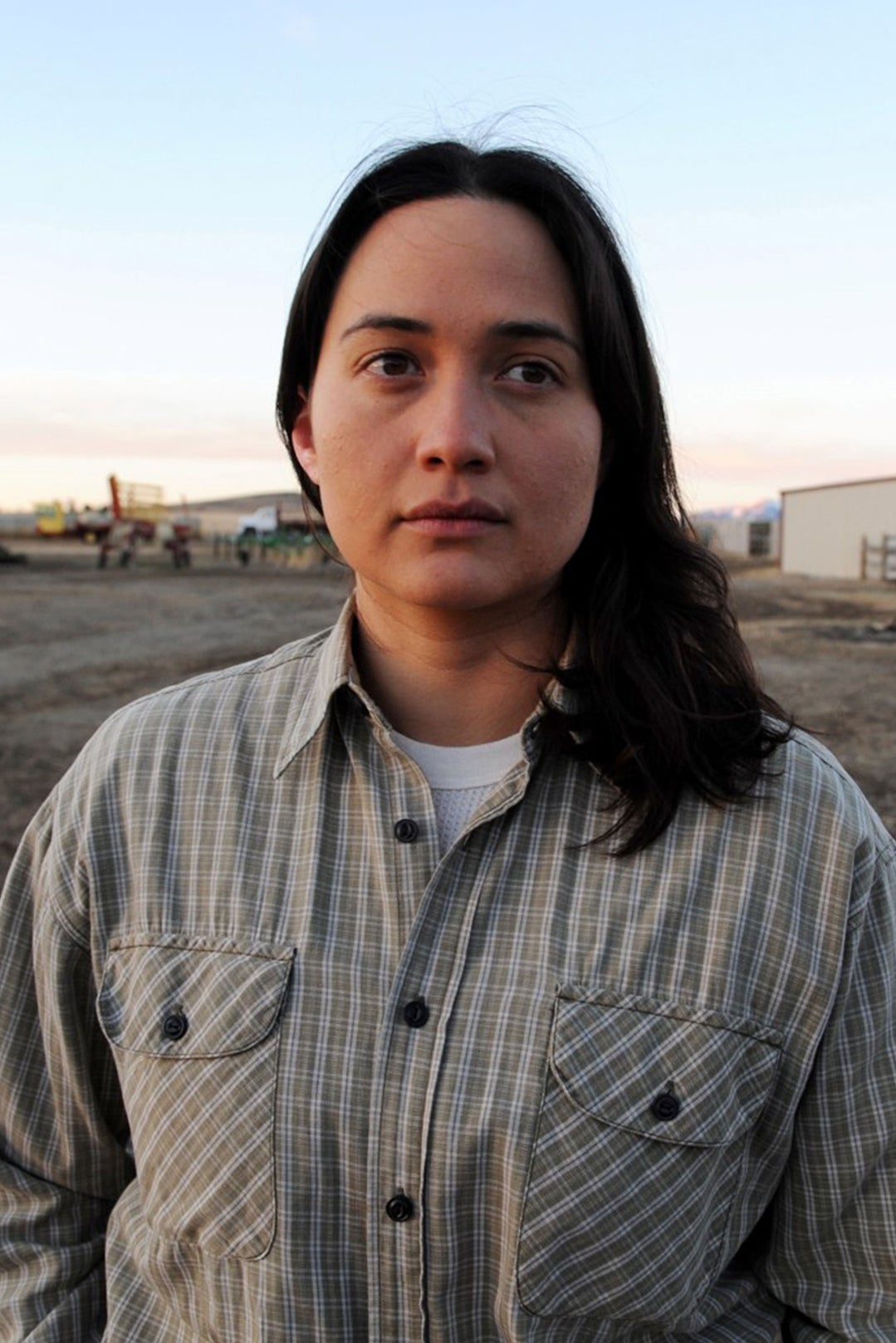The actor, whose performance in Martin Scorsese’s Osage epic led her to become the most critically lauded Native American actor in Hollywood history, is now leading a mystery thriller for Apple TV+. Alongside her young co-star Isabel DeRoy-Olson, she speaks to Adam White about gender identity, onscreen violence, and why she wasn’t bothered by not winning the Oscar.

When the actor Lily Gladstone was in high school, her classmates voted her “Most Likely to Win an Oscar”. Fast-forward to this year, it seemed like they were right on the money. In Martin Scorsese’s sprawling epic Killers of the Flower Moon, she was Mollie, an Osage woman experiencing the systematic slaughter of her oil-rich family. She was warm, flirtatious, grief-stricken, stoic. Such was the power of her performance, its careful grace and wisps of spiky humour, she stole the film right from under Leonardo DiCaprio and Robert De Niro.
Gladstone had won the Golden Globe. She’d won precursor awards from critics in places as far-flung as Florida and Dublin. The metaphorical confetti cannons were at the ready. But when Emma Stone ended up taking home Best Actress at the Oscars instead, for her equally marvellous work in Poor Things, a specific narrative was foisted onto Gladstone. She became, in some circles at least, “the one that missed out”.
Today, with a wry smile, Gladstone says she found all of the discourse flattering but also wildly misplaced. “As an actor, you learn to distance your own ego from that machine a bit,” she says. “Otherwise it’s gonna eat you alive.” She mulls over that moment in time, curling her mouth a little. “By and large, yeah, there was this collective disappointment in Indian country that the big one didn’t come through. But then there was also just a collective celebration that it had gotten that far. Which is what it was supposed to be about anyway.”
At the Screen Actors Guild awards, held two weeks before the Oscars in March, Gladstone took home Best Actress and accepted her trophy with a speech half spoken in the language of the Blackfeet tribe into which she was born. It sparked a fire: Blackfeet children began sending her videos introducing themselves with their Indian names and speaking of their aspirations in life. Major media publications threw a spotlight on the Native language revitalisation efforts spearheaded by her friends. Steven Spielberg told her the speech had encouraged him to download Duolingo and learn Navajo, the Native language of Arizona, the state in which he grew up. Besides, she adds, “the way Indian country is, I think everybody just thinks the Golden Globes are the Oscars. So for a while, people thought that I actually had won it. And tangibly, they’re all just heavy little statues, and I’ve got plenty of ’em on my mantle.”
We’re meeting to talk about Gladstone’s new film, Fancy Dance, a tough, affecting drama about two Indigenous women on the run. Sitting in a New York hotel room in a pink, floral dress, the 37-year-old possesses an innate pull. It’s likely that face of hers: the curious upward slant of her lips, the deep, brown eyes that, on screen, can convey such gravity in a simple glance. You can’t help but be drawn in.
She’s also at an interesting point in her career: an actor no longer at the centre of the awards-show storm and able to finally relax a little, but also still coming to terms with her newfound power. As the biggest name in the film, she’s on a press tour that’s been bent entirely to her schedule. That’s one thing that’s different now. Another is that, while she worked the promotional trail for Killers, she was the awed newbie sitting next to an A-list star; this time around, it’s Gladstone who is the veteran. Sitting next to her is Isabel DeRoy-Olson, Gladstone’s 19-year-old co-lead and an up-and-comer more than happy to bask in her glow.
The award is whatever. I’m just grateful that it’s carved out such a space for representation
“She is such a talented and wonderful human being,” DeRoy-Olson says, launching into a run of compliments that makes Gladstone jokingly cover her ears in embarrassment. “Getting to know her before Killers of the Flower Moon and then watching her do such incredible things after – no one deserves it more than her.”
Gladstone’s performance in Fancy Dance builds on her textured work for Scorsese. There she served as the film’s tragic heroine, a vision of survivalist strength, albeit with a hint of naivety. Her character in Fancy Dance, the dogged aunt to DeRoy-Olson’s optimistic teen, is contemporary and street-smart; she uses her tough muscularity as a veil of protection against outside threats.
Gladstone thinks both films work in tandem with one another, Fancy Dance operating as a response to critics who claimed Killers focused too little on Osage lives, and too much on the machinations of the white men marrying into and murdering Mollie’s family to get the rights to their land. “The feedback I kept hearing was people wanted more of what was going on in Mollie’s life, and her sister’s life,” Gladstone explains. “But I knew Fancy Dance was [in the wings] – and in the hands of Indigenous filmmakers bringing you inside of that insulated experience.” Both Fancy Dance and Killers are also due to sit alongside one another on the Apple TV+ streaming platform, she says. “They belong together. They prop each other up.”

Women on the run: Isabel DeRoy-Olson and Lily Gladstone in ‘Fancy Dance’ (Apple TV+)
Fancy Dance straddles a variety of tones. It’s part coming-of-age story, part mystery thriller – imagine the gentle, cross-country melancholy of Peter Bogdanovich’s Paper Moon crossed with the feminist rage of Thelma & Louise. Jax (Gladstone) is searching for her sister Tawi, a mother of one with underworld connections who has vanished without a trace. Left behind is Tawi’s daughter Roki (DeRoy-Olson), who is convinced her mum will return to join her at an upcoming powwow, in which numerous Native communities gather to meet and dance. Jax wishes to adopt Roki but the authorities are distrustful of her, while Native leaders are unable to help. It is often a sweet film, but also brutal and unsparing. Notably, too, its violence is obscured for the most part – we only hear descriptions of tragic ends, and witness merely their emotional aftermaths. Killers portrayed violence against the Osage more viscerally, which earned it criticism at the time of its release. Gladstone, though, says that there is validity to the choices made by both films – Fancy Dance, it should be noted, is directed by a Native American filmmaker named Erica Tremblay.
“Scorsese was not afraid of showing the reality and the impact of violence,” she says. “I think it was incredibly stirring in that film, and not gratuitous. It was shot from [the perspective] that it is a horrible thing to watch these murders and see these murdered people. But [the camera] always stayed far back, as if you were somebody witnessing it and the banality of it and how quickly it can happen.”

Stealing the show: Gladstone and Leonardo DiCaprio in ‘Killers of the Flower Moon’ (Apple TV+)
The choices made by Fancy Dance are different. There are no brutalised bodies, for instance. But she insists Scorsese’s vision was essential. “He has the ability to shift culture,” she says. “Few people on this planet can pierce the veil, open the door and get through to people in a way that is real and shocking but compassionate.” She speaks slowly and deeply, but with almost regal command. You could hear a pin drop.
Gladstone was born in Montana to a white mother and a Blackfeet and Nez Perce father, and raised on the state’s Blackfeet Reservation. She was first inspired to act after watching the Ewoks in Return of the Jedi, and found early opportunities in local theatre and in school plays. Her professional breakthrough occurred in 2016, when filmmaker Kelly Reichardt cast her as a lonely rancher drawn to Kristen Stewart’s community college teacher in her film Certain Women. Gladstone’s performance aches with longing and uncertainty, while gesturing towards the queerness – or at least outsiderness – that punctuates much of her best work. They’re things Gladstone has always seen in herself, too, from her mixed-race ethnicity to the fluidity of her gender identity: she goes by both “she” and “they” pronouns.
“The way that I’m able to metabolise a lot of characters has to do with their gender expression, and the gender roles imposed on them by society,” she explains. “I think of gender as a cultural thing, like Blackfeet don’t have gendered pronouns, we have gendered verbs.” It means names in the community are symbolic of a person’s purpose or skill set, and not chosen to maintain a gender binary. “My grandfather had a woman’s name, for example.”

Aching with longing: Gladstone in ‘Certain Women’ (Shutterstock)
Jax in Fancy Dance is queer and romantically involved – if at an emotional remove – with an exotic dancer. It’s just one of the elements in the film played so matter-of-factly. Elsewhere, the racism of the local Oklahoma police is presented as casual and underhand, while the lack of institutional support for Roki – with her mother gone, she is threatened with being taken off Native land and placed in the custody of her absent, white father – comes as little surprise to Jax. The characters here are often jaded and battle-weary, long familiar with discrimination and a world set up to work against them.
That refusal to conceal the uglier realities of Indigenous life may have been why it took Fancy Dance more than a year to find distribution. But Gladstone also believes that it needed to be released in the wake of Killers of the Flower Moon, not only as her name could help it find a bigger audience now, but because the theoretical audience for the film required a different entry point into stories of Native people. “A lot of times a piece of art will emerge that’s slightly ahead of the curve, that audiences aren’t quite ready to contextualise in society,” she says. “They don’t know how to watch it. We all knew how special this film was, and all the beats it hits and the conversations that it spawns. But a broader audience needed to have something as big and immense as Killers to be ready for it. People don’t even necessarily know what they want to see until they realise they’re not seeing it.”
It’s also why awards season was so useful for her. “I had enough light on me to reflect it back in a concentrated way, onto other projects and other people,” she says, turning somewhat maternally to DeRoy-Olson, of the Tr’ondëk Hwëch’in and Anishinaabe nations. “The award is whatever,” she continues. “I’m just grateful that it’s carved out such a space for representation. People were so excited. Kids saw it. It normalised the image of a Blackfeet woman on TV, wearing beautiful gowns and speaking her language.”




